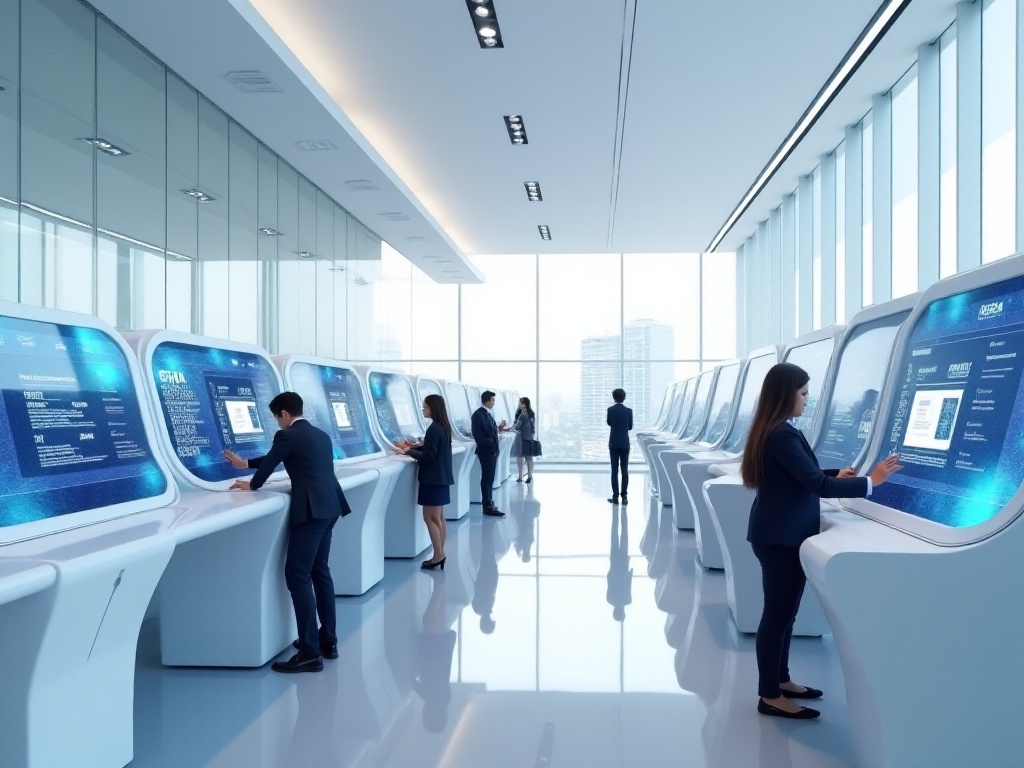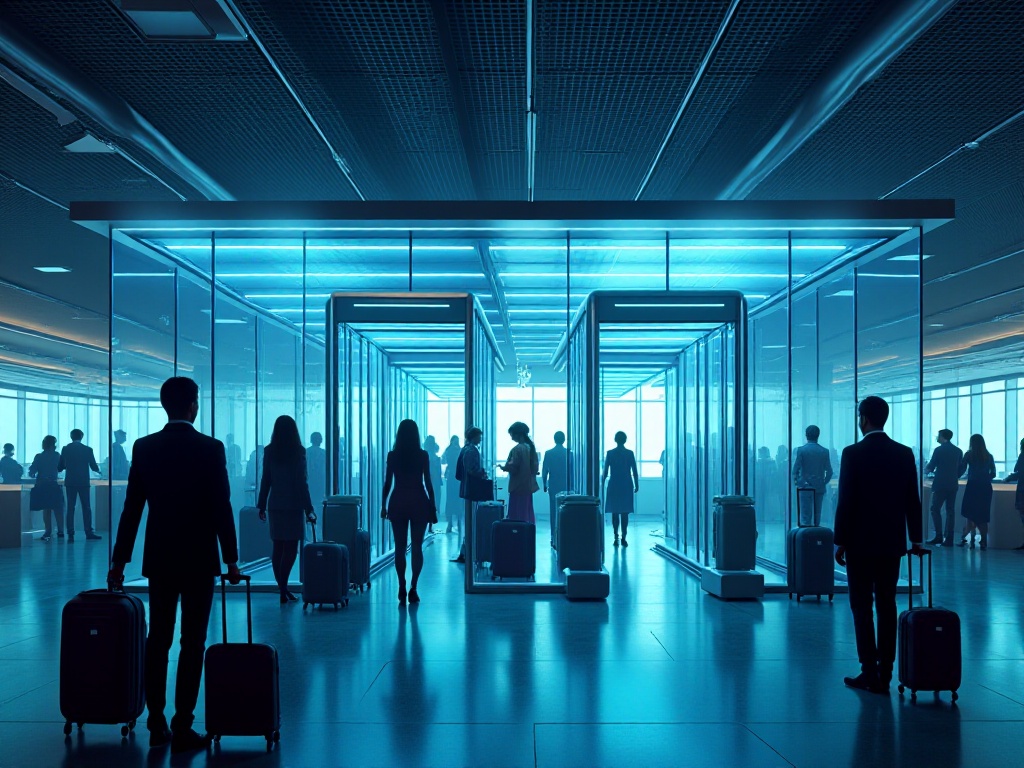Personal Experience
Hi everyone! I'm Xiaomei, and I've just returned from Thailand. I'd like to share my experience getting a visa on arrival at Suvarnabhumi Airport. To be honest, I was quite nervous before departure after reading stories online about endless queues. Looking back now, it wasn't a big deal as long as you're well-prepared.
I remember being so nervous the night before departure that I couldn't sleep, constantly checking Xiaohongshu for others' experiences. But after going through it myself, I realized my worries were unnecessary. Today, I'll share my firsthand experience in detail, hoping to help others who might be just as worried.
Visa Analysis
Many people might think visa on arrival is something fancy. Actually, it's just a temporary entry permit that allows you to get your visa directly at the airport. This policy is only open to citizens of specific countries, and we Chinese are fortunately included!
According to the latest policy from October 2024, we can apply for visa on arrival at nine major entry points, including Suvarnabhumi Airport and Don Mueang Airport. The visa is valid for 15 days, which, while not very long, is sufficient for most short-term tourists.
At the airport, I met a Thai immigration officer who told me they now receive numerous visa-on-arrival applications daily. At Suvarnabhumi Airport alone, they process hundreds of applications daily, sometimes even over a thousand during peak periods! This number really surprised me.

Application Requirements
Let's talk about the application requirements in detail. First and most basic, your passport must be valid for at least 6 months. This is no joke - I witnessed a young woman being rejected because her passport only had 5 months and 20 days left.
You need a confirmed return ticket, which makes sense as they need to ensure you won't overstay. Accommodation proof is also mandatory, whether it's a hotel or guesthouse booking, as long as you can prove you have a place to stay in Thailand.
The most troublesome part might be the proof of funds. You need to show at least 10,000 Thai Baht or equivalent in foreign currency. It sounds intimidating, but it's only about 2,000 Chinese Yuan - the key is being able to prove you have this money.
I remember a guy in the queue who had trouble with this requirement. He didn't bring enough cash, and he forgot his credit card. He was sweating profusely until he finally got a friend back home to transfer money to him. After rejoining the queue, it took him quite a while to sort everything out.

Required Documents
Let me detail the document preparation process. First, you need a 2-inch photo with a white background. This is crucial - I saw many people bring their Chinese ID photos only to be told they weren't acceptable, forcing them to retake photos at the airport, wasting both time and money.
The TM.88 application form might look intimidating, but it's not that difficult to fill out. I downloaded a template online beforehand and filled out everything except for the information needed on-site. This saved me from scrambling at the airport.
Round-trip flight itineraries must be printed - electronic versions aren't accepted. I saw a couple who only had electronic tickets on their phones and had to find a printing shop, where airport printing fees aren't cheap!
Hotel booking confirmations also need to be printed, clearly showing your name and booking dates. I booked through JD, and the confirmation was properly formatted, so it was approved right away.
As for proof of funds, I recommend preparing multiple options. I brought 3,000 Thai Baht in cash, a UnionPay card, and a credit card. Although I only ended up using the credit card and cash combination, it's better to be over-prepared.
The visa fee is 2,000 Thai Baht, which must be paid in cash. I suggest bringing exact change, as the cashier might not have change available. During the queue, I noticed some people pulling out large bills, and the staff had to find change, which also took extra time.
Application Process
Let's discuss the specific application process. I did my homework and chose a flight arriving at 7 AM. Sure enough, the airport wasn't busy then, and the visa-on-arrival queue was short, with only about 20 people.
The first step is getting and filling out the application form at the visa-on-arrival counter. Since I had pre-filled most of the content, this step went quickly. I noticed many people filling out forms on-site, taking 20-30 minutes, and often making mistakes requiring them to start over, which was very time-consuming.
The waiting period for review was indeed the most tedious part. I waited about an hour and a half, which was actually pretty good. I brought my tablet and watched some pre-downloaded TV shows, so time passed relatively quickly. There was a couple next to me who hadn't brought anything to do and looked particularly anxious just waiting.
During my interview, the immigration officer asked about my purpose in Thailand, planned length of stay, and accommodation. I truthfully answered that I was there for tourism, planning to stay for a week, and staying at a hotel in the Siam area. The whole process took just a few minutes and was quite relaxed.
The final step of paying fees and receiving the visa was quick. The staff had me verify the information on the visa, and after confirming everything was correct, I could proceed with immigration.
How to Avoid Pitfalls
Regarding pitfalls, I witnessed quite a few. The most typical was the photo issue. One girl brought a white-background photo she'd taken at home with her phone, but it wasn't professional enough and she had to retake it. The airport photo booth charges 250 Thai Baht, about 50 Yuan, which isn't cheap.
Then there's the proof of funds issue. Many people think they must bring enough cash, but credit cards are perfectly acceptable as proof. I used a combination of a credit card with a 50,000 Yuan limit and 3,000 Thai Baht in cash, which the immigration officer approved with just a glance. However, I recommend bringing internationally accepted VISA or MasterCard, as some UnionPay cards might not be accepted.
Some people also had issues with accommodation proof. One guy had booked a hostel dorm bed, and his booking showed a bed number instead of a room number, so he was asked to provide a more detailed booking confirmation. I recommend booking regular hotels with detailed booking confirmations.
Another often overlooked detail is filling out the visa application form. The form is in English, and many people fill it out randomly because they don't understand it, only to have it returned for correction. I suggest finding a sample form online beforehand or using translation software to help fill it out.

Practical Tips
After this experience, I've compiled several particularly useful tips. First, about choosing flight times. Based on my observations and conversations with airport staff, 6-8 AM and 2-4 PM are relatively less busy periods. When we arrived at 7 AM, the whole process was fairly smooth. However, by 9 AM, when I passed by the visa counter again, the queue had extended outside the hall.
Regarding cash preparation, I strongly recommend exchanging Thai Baht in China before departure. The airport exchange rates are terrible - I calculated roughly a 10% loss. Plus, if the exchange counter is closed or their system is down, it becomes even more problematic.
Charging is also very important. Because of the long wait, phones can easily run out of battery. Although the airport has power outlets, Thai outlets are round, and without an adapter, you can't use them. I brought a high-capacity power bank and used nearly half its charge.
There are also queuing considerations. Since you'll be waiting a long time, wear comfortable shoes. I saw several women in high heels who started complaining about foot pain after standing for a while. It's also good to bring snacks and water, as there are no convenience stores near the visa area - you'd have to walk quite far to buy anything.

Important Notes
There are several crucial points about the visa on arrival that everyone should know. First, the 15-day validity period is strict and cannot be extended. While queuing, I heard a foreigner complaining about being denied an extension on his previous visit. So if you plan to stay in Thailand for more than 15 days, it's better to get a regular tourist visa in China beforehand.
Second, while tourists meeting the requirements can apply for a visa on arrival, the final decision rests with the immigration officer. I witnessed someone being denied a visa because they had a record of illegal work in Thailand. In such cases, not only is the visa application fee non-refundable, but you also have to buy an immediate return ticket home, resulting in significant losses.
Another point is about photo specifications. While the official requirement is for 2-inch white background photos, Thai and Chinese 2-inch sizes are slightly different. I recommend taking photos directly at the airport - though more expensive, it ensures compliance with requirements and prevents rejection.

Friendly Reminders
Finally, visa policies can change, so no matter how detailed this guide is, I recommend checking the latest regulations before departure. You can follow the Thai Embassy in China's official channels or consult reliable travel agencies.
Also, while visa on arrival seems convenient, if time permits, I still recommend getting your visa in China beforehand. This not only saves time at the airport but also eliminates the risk of visa rejection. Plus, regular tourist visas have longer validity periods and cost about the same, offering better value.
Getting a visa on arrival is indeed a unique experience. Seeing tourists from around the world queuing, hearing various languages mixing together, and experiencing the collision of different cultures is quite interesting. I hope this super-detailed guide helps those planning to visit Thailand. Have a great trip!







